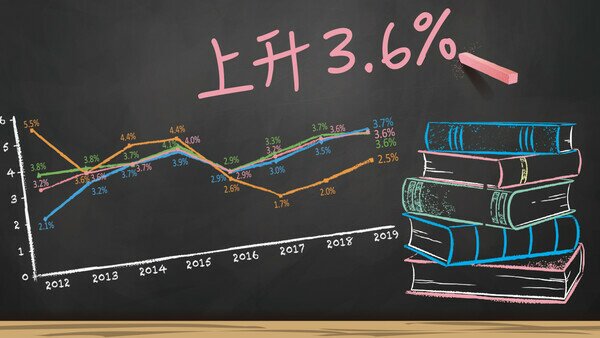Purchasing a full set of textbooks for a student may cost as much as several thousand dollars and parents are therefore very concerned about textbook price hikes every year. Primary and secondary textbook prices have been on the rise for the past 4 years, and each year the increase has been higher than the inflation rate. The Consumer Council recently published 2019/2020 textbook price survey which revealed that prices of nearly 95% of the textbooks have increased by an average 3.6% in the new school year, representing a 1.1 percentage points higher than the inflation rate of 2.5% in the same period.
The Council’s survey covered 747 commonly used textbooks, including 247 for primary school and 500 for secondary school, from 24 publishers. Out of these 747 textbooks, the prices of 706 (94.5%) had risen by 0.8% to 8.3% in the new school year. Textbooks for junior secondary school recorded the highest surge of 3.9%, followed by 3.8% of those for junior primary school and 3.6% for senior primary school. Textbooks for senior secondary school had the smallest increase of 3.4%. When ranked by subjects, prices for primary school textbooks increased by an average of 1.7% to 6.4%. The increase in textbook prices for 6 subjects was higher than the inflation rate, with religious studies recording the biggest increase. For textbooks commonly used in secondary school, the average increase in price among different subjects ranged from 1.1% to 4.4%. Of these, prices of textbooks for 21 subjects had increased more than the inflation rate with history and science textbooks recording the biggest increases.
It is noteworthy that among the top 10% of textbooks with the highest price hike, the increases were significantly higher than the inflation rate over the same period. Their prices rose substantially from 4.5% to 8.3%. About 55% of them were secondary school textbooks and most were for elective subjects: history, science, geography, information and communication technology, economics, etc.
The prices for 41 textbooks (5.5%) did not increase in the new school year, showing a slight increase when compared with 32 textbooks (3.8%) in last year’s survey. Similar to the situation last year, textbooks with price unchanged, most of them were for non-core subjects, such as life education, geography, information and communication technology, religious studies and biology.
The Education Bureau fully implemented the "Policy of Debundling Textbooks and Teaching/Learning Materials for Pricing" since 2014. This policy prohibits publishers from bundling the cost of teaching and learning materials in the textbook prices, so that students and teachers can buy textbooks and teaching materials separately according to their needs and at clearly stated prices. The teaching and learning materials for the textbook samples in this survey were all unbundled from the textbook prices.
In response to Council's enquiries, publishers attributed the textbook price increase to rising operation costs, including staff salaries, paper prices and printing costs, as well as the drastic decrease in the number of students and the reduction in the number of students taking elective subjects in senior secondary school. According to data provided by the paper and printing industries, this year the average price of woodfree paper and art paper dropped by 5.7% and 6.2%, respectively, while the average printing cost was similar to last year.
The Consumer Council reserves all its right (including copyright) in respect of CHOICE magazine and Online CHOICE.




